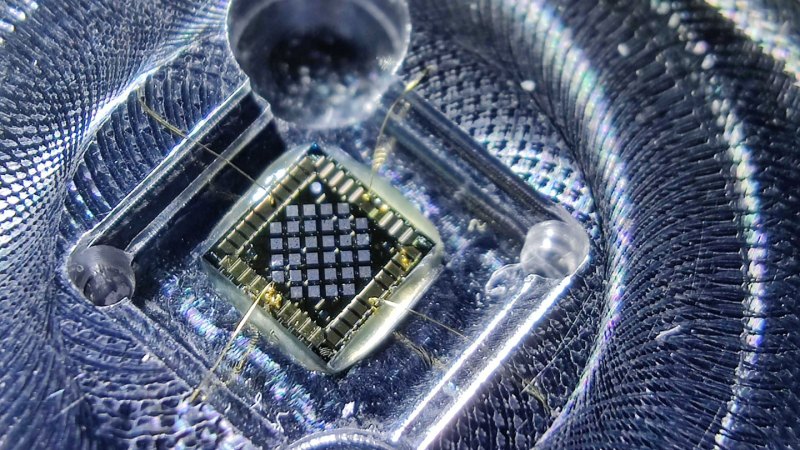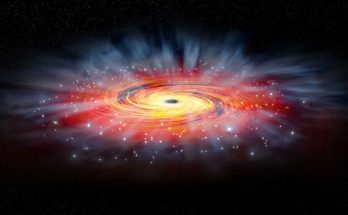
Neutrinos are known for funny business. Now scientists have set a new limit on a quantum trait responsible for the subatomic particles’ quirkiness: uncertainty.
The lightweight particles morph from one variety of neutrino to another as they travel, a strange phenomenon called neutrino oscillation (SN: 10/6/15). That ability rests on quantum uncertainty, a sort of fuzziness intrinsic to the properties of quantum objects, such as their location or momentum. But despite the importance of quantum uncertainty, the uncertainty in the neutrino’s position has never been directly measured.
“The ‘quantum properties of the neutrino’ stuff is a little bit of the Wild West at the moment,” says nuclear physicist Kyle Leach of Colorado School of Mines in Golden. “We’re still trying to figure it out.”
It’s impossible to know everything about a quantum particle. Heisenberg’s uncertainty principle famously states that it’s futile to attempt to precisely determine both the momentum of a quantum object and its position (SN: 1/12/22). Now, Leach and colleagues report new details about the size of the neutrino’s wave packet, which indicates the uncertainty in the particle’s position.
Quantum particles travel as waves, with ripples that are related to the probability of finding a particle at a given location. A wave packet is the set of ripples corresponding to a single particle. The new experiment sets a limit on the size of the wave packet for neutrinos produced in a particular type of radioactive decay, Leach’s team reports in a paper submitted April 3 to arXiv.org. The particles have a wave packet size of at least 6.2 trillionths of a meter.
The researchers studied neutrinos produced in the decay of beryllium-7, via a process called electron capture. In this process, a beryllium-7 nucleus absorbs an electron, and the atom transforms into lithium-7 and spits out a neutrino.
The team implanted beryllium-7 atoms in a highly sensitive device made from five layers of material, including superconducting tantalum, which can transmit electricity without resistance. In the decay, the newly produced lithium-7 recoils away from the neutrino. When cooled to 0.1 degrees above absolute zero (–273.05° Celsius), the device allowed the researchers to detect the energy of that recoil. The spread in the energy of the lithium atoms revealed the neutrino wave packet’s minimum size.
Neutrinos are special in that they interact so rarely with matter that they maintain their quantum properties over long distances. Most quantum effects take place on very small scales, but neutrino oscillations occur over thousands of kilometers.
So studying the size of neutrinos’ wave packets could help unveil the connection between the everyday world of classical physics and the strangeness of quantum physics, says Benjamin Jones, a neutrino physicist at the University of Texas at Arlington who was not involved with the experiment. “If you can predict something like this and then measure it, then you really validate some of the ideas that people have about how the classical world emerges from an underlying quantum reality,” he says. “And that’s what really got me excited about this in the first place.”
In another study, submitted April 30 to arXiv.org, Jones and his colleagues theoretically predicted the size of the neutrino wave packet, pegging it at about 2.7 billionths of a meter. Now it’s up to experimental physicists to try to measure it, not just determine its minimum size.
Measuring the size of neutrinos’ wave packets might help resolve discrepancies among past experiments, and potentially point the way to new types of subatomic particles still to be discovered. But the size of the neutrino’s wave packet depends on how the particle is produced. So it’s not clear how the size limit observed in Leach’s study might translate to neutrinos produced by other means, says neutrino physicist Carlos Argüelles of Harvard University. For example, many experiments observe neutrinos from nuclear reactors, but those are produced via a different type of radioactive decay.
Still, Argüelles says, “the study of the neutrino wave packet has fundamental implications in the quantumness of the neutrino, and the quantumness of the neutrino is actually what makes neutrinos interesting. It’s the most unique property that they have.”
#neutrinos #quantum #fuzziness #beginning #focus
Image Source : www.sciencenews.org



